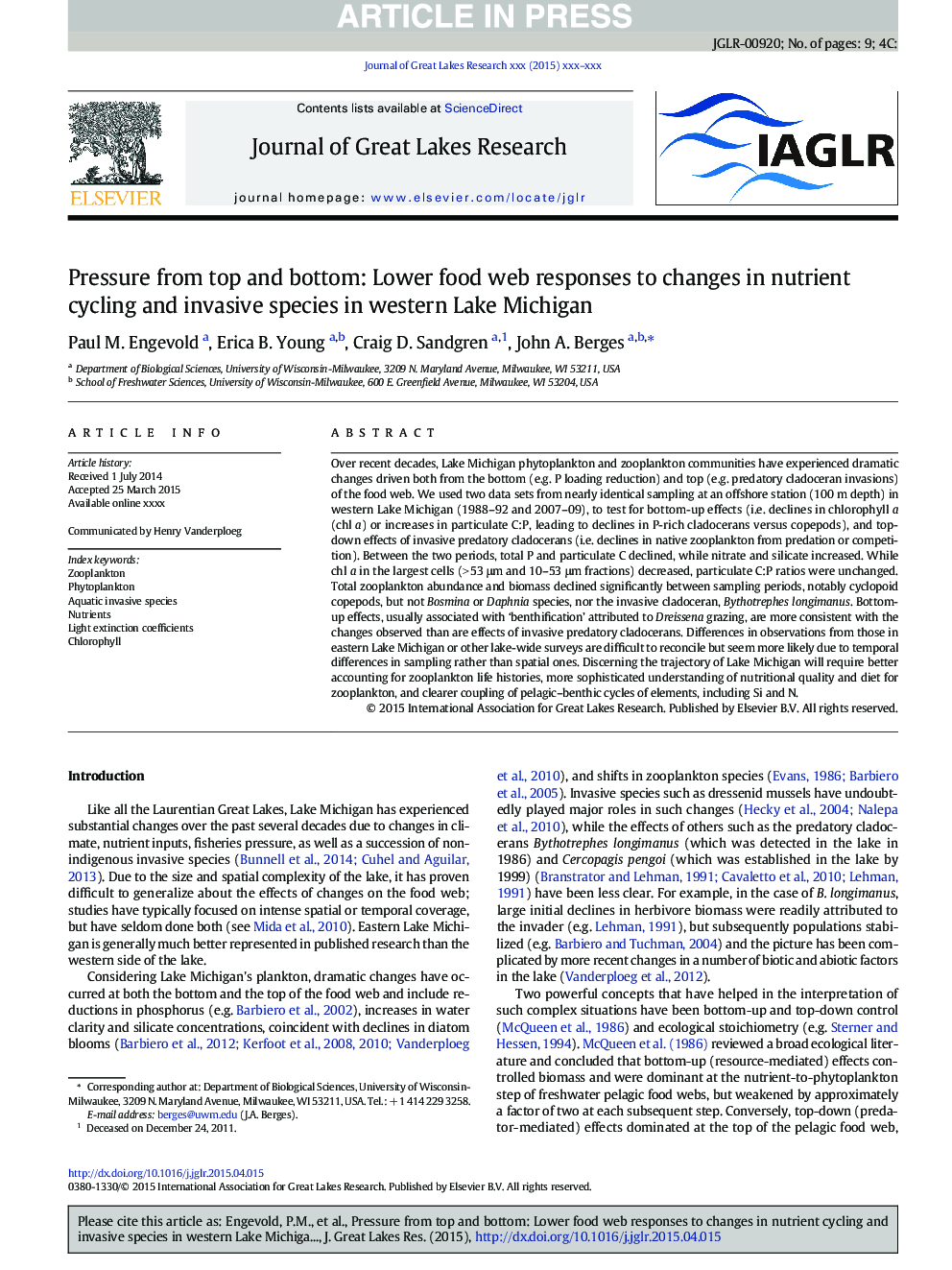| Article ID | Journal | Published Year | Pages | File Type |
|---|---|---|---|---|
| 6304908 | Journal of Great Lakes Research | 2015 | 9 Pages |
Abstract
Over recent decades, Lake Michigan phytoplankton and zooplankton communities have experienced dramatic changes driven both from the bottom (e.g. P loading reduction) and top (e.g. predatory cladoceran invasions) of the food web. We used two data sets from nearly identical sampling at an offshore station (100 m depth) in western Lake Michigan (1988-92 and 2007-09), to test for bottom-up effects (i.e. declines in chlorophyll a (chl a) or increases in particulate C:P, leading to declines in P-rich cladocerans versus copepods), and top-down effects of invasive predatory cladocerans (i.e. declines in native zooplankton from predation or competition). Between the two periods, total P and particulate C declined, while nitrate and silicate increased. While chl a in the largest cells (> 53 μm and 10-53 μm fractions) decreased, particulate C:P ratios were unchanged. Total zooplankton abundance and biomass declined significantly between sampling periods, notably cyclopoid copepods, but not Bosmina or Daphnia species, nor the invasive cladoceran, Bythotrephes longimanus. Bottom-up effects, usually associated with 'benthification' attributed to Dreissena grazing, are more consistent with the changes observed than are effects of invasive predatory cladocerans. Differences in observations from those in eastern Lake Michigan or other lake-wide surveys are difficult to reconcile but seem more likely due to temporal differences in sampling rather than spatial ones. Discerning the trajectory of Lake Michigan will require better accounting for zooplankton life histories, more sophisticated understanding of nutritional quality and diet for zooplankton, and clearer coupling of pelagic-benthic cycles of elements, including Si and N.
Related Topics
Physical Sciences and Engineering
Earth and Planetary Sciences
Earth and Planetary Sciences (General)
Authors
Paul M. Engevold, Erica B. Young, Craig D. Sandgren, John A. Berges,
